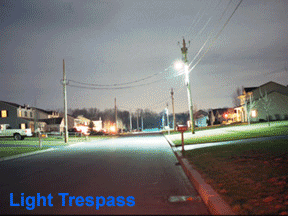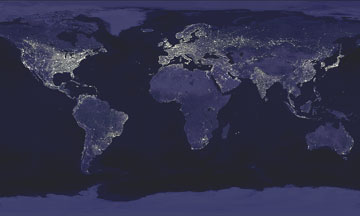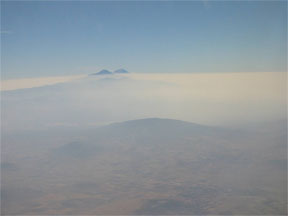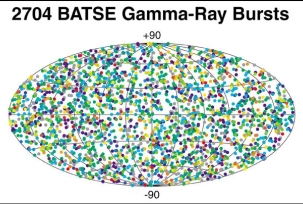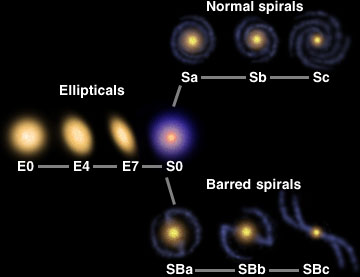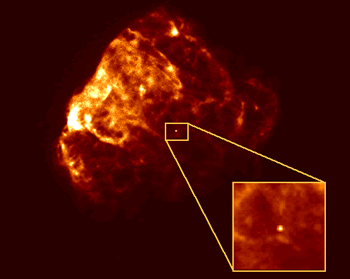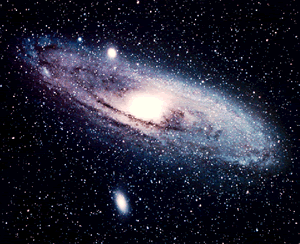Click on image for full size
Images courtesy of Kevin Wigell (light trespass), Joe "Rocket" Roberts (over illumination), and Charliebrown7034 via Wikipedia (sky glow).
Types of Light Pollution
Light pollution is the unwanted illumination of the night sky created by human activity. Light pollution is a broad term that refers to multiple problems, all of which are caused by inefficient, annoying, or arguably unnecessary use of artificial light. Specific types of light pollution include light trespass, over-illumination, and sky glow.
As its name implies, light trespass occurs when unwanted light spills over beyond the boundary of the property on which a light is located to adjacent properties. Light trespass is often caused by high or poorly positioned lights. The result is bright night lighting on an area that would otherwise be dark.
In recent decades, there has been an increase in exterior lighting for safety reasons or security needs. Combined with the increased exterior lighting from sporting events and commercial activities, light trespass has become a significant problem in many parts of the world. Certainly it is important to have adequate light for safety and security, however, when misapplied, additional problems are created.
Over illumination is the use of light well beyond that required for a specific activity. Many places, both indoors and out, have lights on when no people are present. In many cases, this goes beyond the need for security lighting. Think of office buildings that have lights on all night even though the buildings are virtually empty.
Sky glow is the bright ‘glow’ seen over many cities and towns in the evening. It is the result of the many electric lighting fixtures that shed light above urban areas. It is caused by light traveling through the atmosphere being refracted or scattered by water droplets or particles (aerosols) such as dust, pollen, bacteria, spores, salt from sea spray, mineral particles lifted from deserts and waste products from industry. It is therefore worse in heavily polluted areas, and will always exist to some extent when the air quality is poor.


